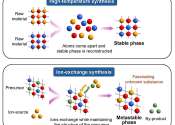Scientists make battery electrodes from waste eggshells
(Phys.org)—Americans consume 76 billion eggs per year, and while some of the eggshell waste is used for fertilizer or dietary supplements, the majority of these eggshells are thrown away. In a new study, researchers at ...









